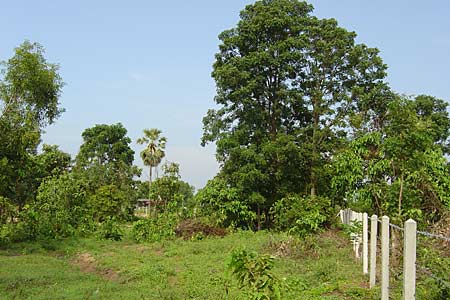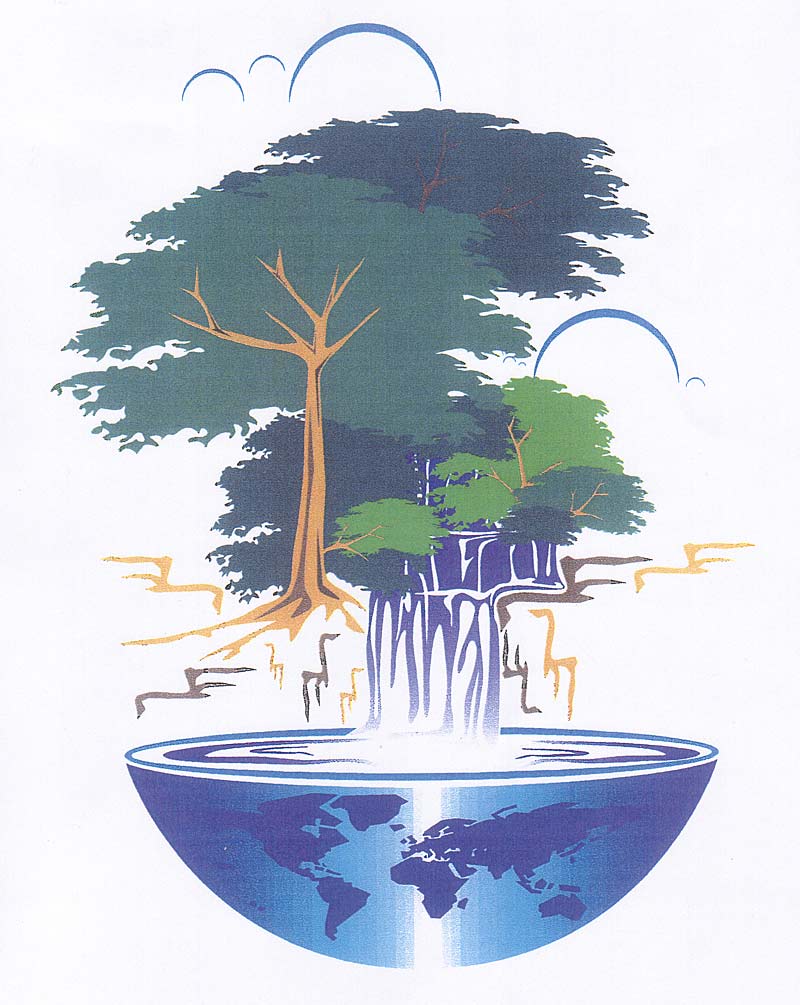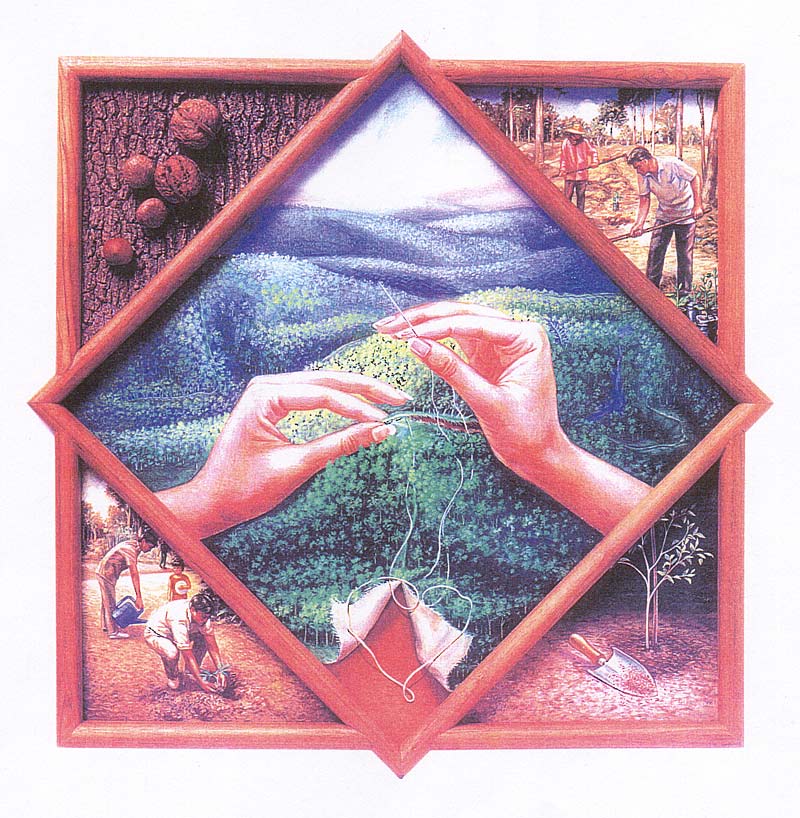Afforestation Project RAI PHAJOM
Rai Phajom Province Tak near the village of Nong Nok Gra Plien
Rai Phajom Province Tak near the village of Nong Nok Gra Plien
- Start of the project in July 2004
- Total area with papers approx. 2 ½ Rai
- In hectares: the land has official papers and is measured, about 4000 m2
- Planted area, individual trees planted: "Marün" (Irvingia malayana oliv. Ex. A.W. Benn.) a walnut tree
- Characteristic: in the countryside there is a tree about 10 meters high: "Phajom" (White Meranti: Shorea roxburghi G. Don), it blooms white and smells extraordinary, has become rather rare in the area
- Current goals: Planting seeds, letting nature regenerate: Observe and see what comes by itself? Cutting grass and thorns
- Local caretakers: Members of the Thangbunrod family from Sattalung
Micro-projects are also valuable: they improve the micro-climate on a small scale in the local area, set an example and encourage imitation.

Tree park near the village school
Situation:
Our property borders on the property of the local village school. The land has not been cultivated for over 10 years. In the meantime a few trees and a few tree remains have grown up by themselves, probably from roots that were still present. This village also has big water problems. In the dry season, water often has to be supplied several times by truck from the city! In former times this village also had rushing brooks - even in the dry season!
Ziel:
A small "tree garden" with the largest possible variety of tree species at the school, which can serve as an example for teachers and pupils to learn about the connections between "forest and water".
A small "tree garden" with the largest possible variety of tree species at the school, which can serve as an example for teachers and pupils to learn about the connections between "forest and water".
Vision:
A small patch of woodland on the edge of the school. In it there is a hexagonal pavilion (in Thai "Sala") with a diameter of about 6 meters. In this pavilion there are information boards which give information about the value of the forest, especially as a water reservoir. The roof is overshadowed by the overhanging branches of the forest trees.
On the benches that have been created, interested people can linger for a picnic. For waste there are separate waste containers such for glass, plastic and cans. Information boards provide information about the separation of waste and its recycling. There is a composting area for organic waste.
A small patch of woodland on the edge of the school. In it there is a hexagonal pavilion (in Thai "Sala") with a diameter of about 6 meters. In this pavilion there are information boards which give information about the value of the forest, especially as a water reservoir. The roof is overshadowed by the overhanging branches of the forest trees.
On the benches that have been created, interested people can linger for a picnic. For waste there are separate waste containers such for glass, plastic and cans. Information boards provide information about the separation of waste and its recycling. There is a composting area for organic waste.










